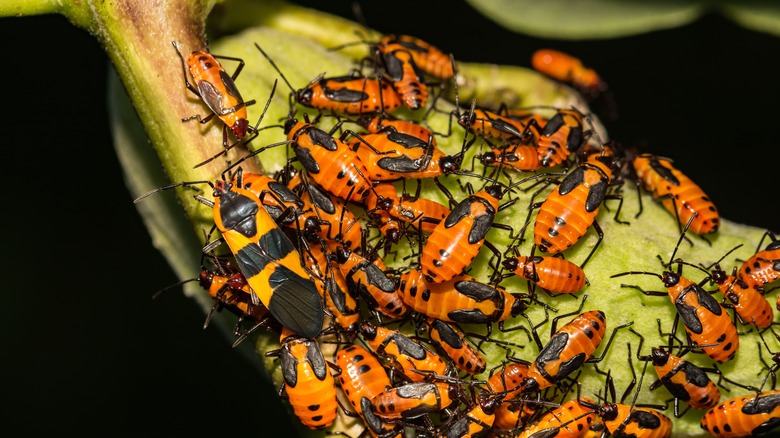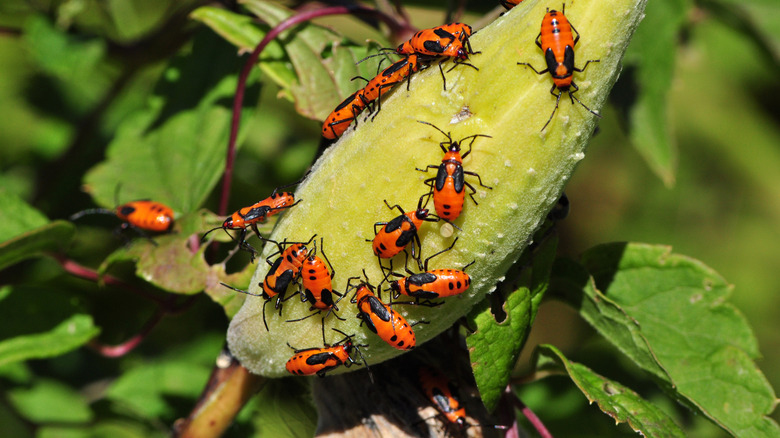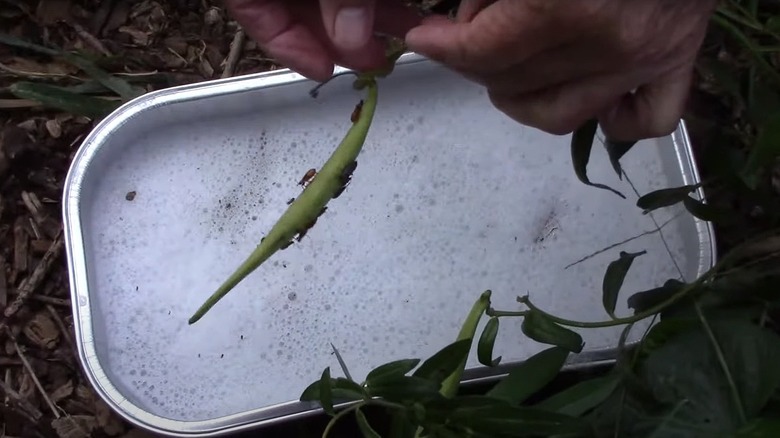How To Safely Deal With Milkweed Bugs
Pests on any plant are a nuisance, but finding nasty bugs on milkweed plants creates an extra dilemma. Milkweed is the host plant for monarch butterflies. The larvae of this beautiful, endangered butterfly feed exclusively on milkweed – they cannot survive by eating any other kind of plant. To help support monarchs, many homeowners have incorporated one of the many species of this plant in their landscape. Still, when pests arrive, it's hard to know how to deal with them – you cannot use pesticides on potentially harmful insects without killing monarchs, but you cannot feed monarchs if your plants are unhealthy. This is called the milkweed paradox. (Okay, we made that up, but it's still perplexing!)
The good thing about milkweed bugs is they do not typically do a lot of damage to the plants. They usually arrive in late summer, but their sudden appearance is concerning because they often arrive in large numbers. These pests will feed on leaves and blooms, but they really want to eat the seeds; that's why they show up so late in the year.
Identifying milkweed bugs
There are two types of milkweed bugs, and they come in large and small sizes. The large species is a big bugger at up to ¾ inch long. The small species is still a significant size at about ½ inch. Sometimes mistaken for a boxelder bug, the large milkweed bug is slightly larger with a bright orange "X" shape on its back. While possible, it is unlikely you will find boxelder bugs on your milkweed, but very likely, you'll find milkweed bugs on their favorite plants.
Small milkweed bugs are similar in color and markings. Their backs feature a more distinct orange "X" shape and the appearance of a small black heart. Nymphs of both species of this insect are also brightly colored with small black markings that expand as they reach maturity. Although you can find any life stage of this pest on any part of your milkweed plant, they are most likely to be found around the seed pods since that's their preferred food source.
Dealing with these pests
You can deal with milkweed bugs in a few ways without harming monarch caterpillars or eggs. The first and most straightforward method of handling these pests on your plant is just to leave them alone. Unless they are doing visible damage to your plants, it may be best to let them enjoy their seeds while the caterpillars munch on the leaves.
However, if milkweed bugs take over your plant before it produces seed pods, you may have to take some action. Pesticides, even organic ones, are indiscriminate and will kill all bugs, good or bad. If you decide to take this route, you'll need to understand that you are saving your plants from all damage from milkweed bugs and the monarch larvae that need those plants to survive.
It may seem a little icky, but the safest way to remove an infestation of milkweed bugs is to knock them into a bucket of soapy water and let them drown. Since nymphs can easily hide under leaves, you may have to hand-pick milkweed bugs a few times to eliminate the entire population. However you choose to deal (or not deal) with milkweed bugs, the safest path is to keep all kinds of pesticides away from your plants. This one small choice can help restore the monarch population.


